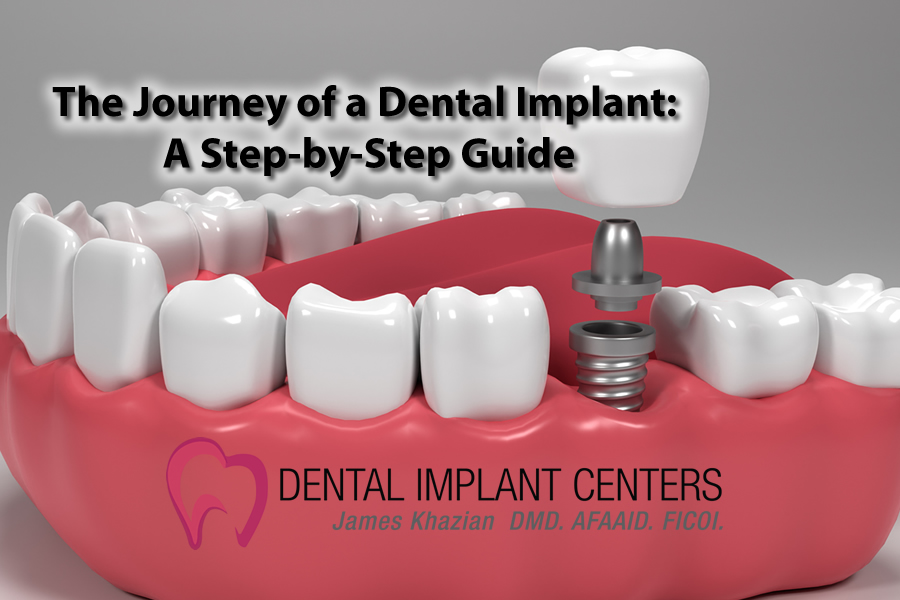Summary
The dental implant process is a precise and well-structured journey that offers a dependable solution for replacing missing teeth. From the initial consultation to the final fitting of the crown, each step is designed to ensure a successful outcome.
The Journey of a Dental Implant: A Step-by-Step Guide
Dental implants have become a cornerstone in modern restorative dentistry, providing a long-lasting and aesthetically pleasing solution to tooth loss. Unlike traditional dentures or bridges, dental implants are designed to be a permanent fixture, integrating with the jawbone and replicating the function and appearance of natural teeth. For those considering this procedure, it’s important to understand the detailed process involved in receiving a dental implant. This guide will walk you through each stage, highlighting what to expect and how dental professionals ensure the best results.
Understanding Dental Implants
Dental implants consist of small, screw-like titanium posts that are surgically implanted into the jawbone to replace the roots of missing teeth. These posts act as stable anchors for artificial teeth, which are meticulously crafted to match the patient’s existing teeth in color, shape, and size. The biocompatible nature of titanium allows the implant to fuse with the jawbone in a process known as osseointegration, creating a solid foundation for the prosthetic tooth.
The Consultation and Evaluation
The first step in receiving a dental implant is an in-depth consultation with a skilled dentist or oral surgeon. During this appointment, the dentist will evaluate your oral health, take detailed images of your mouth and jaw, and discuss your dental history and future goals. This comprehensive assessment helps determine if you are a suitable candidate for dental implants, considering factors such as bone density, gum health, and overall medical history.
Should any pre-existing dental issues be identified, such as gum disease or cavities, these will need to be addressed before proceeding with the implant. Once cleared for the procedure, your dentist will create a personalized treatment plan tailored to your specific needs.
Preparatory Treatments
In certain cases, preparatory treatments are necessary to ensure the successful placement of dental implants. If the jawbone is found to be insufficiently dense to support an implant, a bone grafting procedure may be recommended. This involves adding bone material to the jaw to strengthen it, which can be sourced from another part of the patient’s body, a donor, or synthetic materials.
For those with significant gum recession, a gum graft may also be required to provide adequate coverage and support for the implant. These preparatory steps are critical for establishing a strong foundation and maximizing the chances of a successful implant.
Surgical Placement of the Implant
This procedure is typically carried out under local anesthesia, though sedation options are available for patients who experience anxiety. The oral surgeon will make an incision in the gum to expose the jawbone, where a small hole is drilled to accommodate the titanium implant post.
Once the implant is securely placed in the bone, the gum tissue is sutured over it to protect the site as it heals. This healing period is crucial, as it allows the bone to grow around and integrate with the implant, anchoring it firmly in place. This process, known as osseointegration, can take several months but is essential for the long-term success of the implant.
Attaching the Abutment
After the implant has fully bonded with the jawbone, a minor surgical procedure is performed to place an abutment. The abutment is a small connector piece that extends above the gumline and serves as the attachment point for the prosthetic tooth. During this procedure, the dentist will carefully expose the implant and secure the abutment, shaping the surrounding gum tissue to ensure it heals properly around this new fixture.
Creating and Fitting the Prosthetic Tooth
With the abutment in place, the next step is to design and create the prosthetic tooth, often referred to as a crown. Impressions of your mouth are taken to create a model, which is then used to fabricate a custom crown that matches your natural teeth in color, shape, and size. This meticulous customization ensures that the prosthetic tooth will blend seamlessly with your smile, providing a natural and aesthetically pleasing result.
While the permanent crown is being made, a temporary crown may be placed on the abutment. This temporary solution allows you to maintain normal function and appearance during the final stages of the implant process.
Securing the Crown
Once the permanent crown is ready, it is carefully attached to the abutment. The dentist will make sure the crown fits properly and that your bite is correctly aligned. Proper alignment is crucial for comfort and function, as a poorly fitted crown can cause discomfort or lead to complications down the line.
With the crown securely in place, your new dental implant will function just like a natural tooth, allowing you to eat, speak, and smile with confidence.
Post-Procedure Care and Maintenance
Maintaining good oral hygiene practices—such as regular brushing, flossing, and routine dental check-ups—is essential for the longevity of your implant. Your dentist may recommend special tools, like interdental brushes, to help clean around the implant and prevent plaque buildup.
Regular dental visits are crucial for monitoring the condition of the implant and ensuring that it remains healthy and secure. With diligent care, dental implants can last a lifetime, providing a permanent and reliable solution for tooth loss.
Conclusion: Achieving a Lasting Smile
The dental implant process is a precise and well-structured journey that offers a dependable solution for replacing missing teeth. From the initial consultation to the final fitting of the crown, each step is designed to ensure a successful outcome. By understanding the process and working closely with an experienced dental professional, patients can achieve a restored smile that looks, feels, and functions just like their natural teeth. Dental implants not only enhance your appearance but also contribute significantly to your overall oral health and quality of life.


